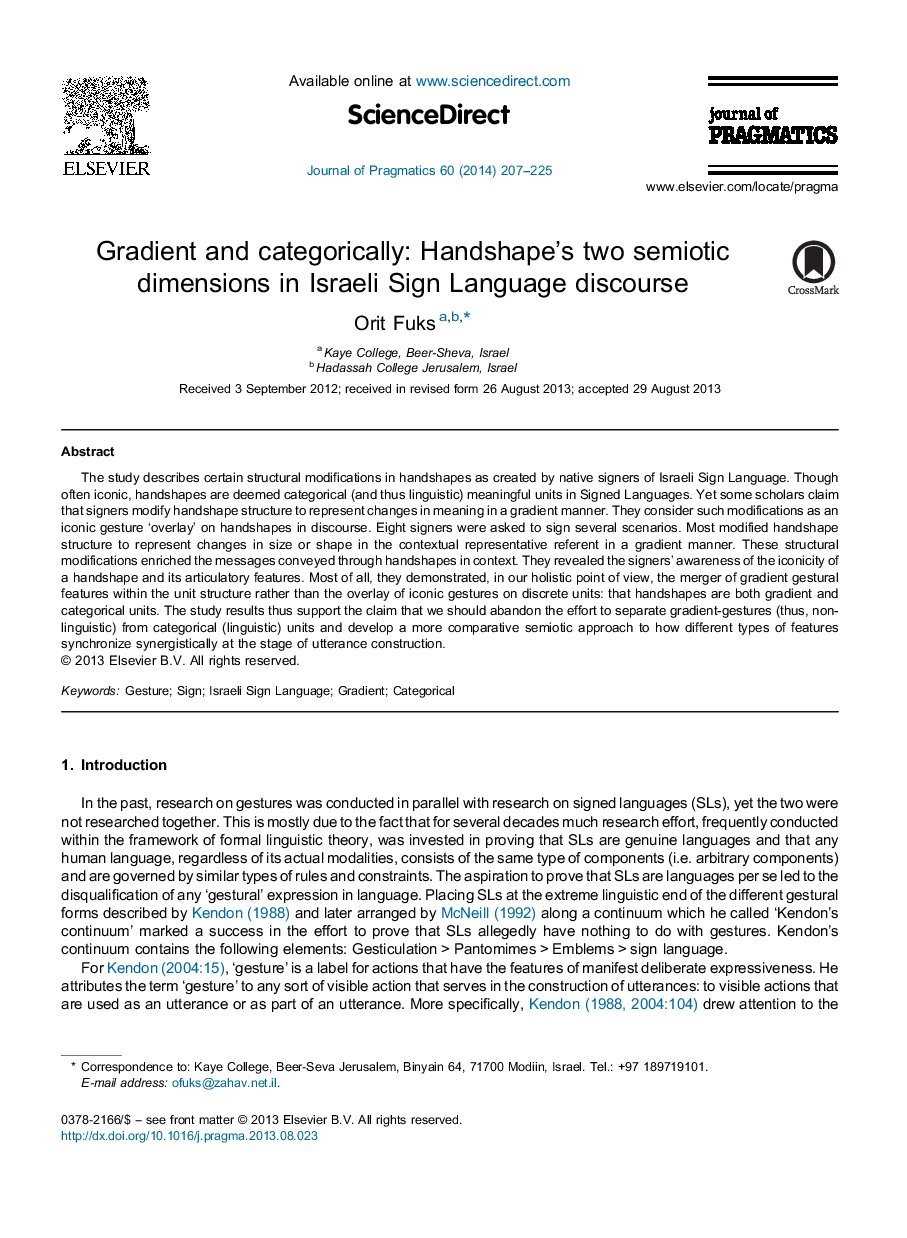| Article ID | Journal | Published Year | Pages | File Type |
|---|---|---|---|---|
| 932808 | Journal of Pragmatics | 2014 | 19 Pages |
•We describe structural modifications in handshapes created by Israeli signers.•Handshapes are considered meaningful categorical units in sign languages.•The signers modified handshapes in a gradient way to represent changes in referents.•The modifications enriched and enhanced the messages conveyed through handshapes.•These demonstrate the merger of gradient-gestures within the unit structure.
The study describes certain structural modifications in handshapes as created by native signers of Israeli Sign Language. Though often iconic, handshapes are deemed categorical (and thus linguistic) meaningful units in Signed Languages. Yet some scholars claim that signers modify handshape structure to represent changes in meaning in a gradient manner. They consider such modifications as an iconic gesture ‘overlay’ on handshapes in discourse. Eight signers were asked to sign several scenarios. Most modified handshape structure to represent changes in size or shape in the contextual representative referent in a gradient manner. These structural modifications enriched the messages conveyed through handshapes in context. They revealed the signers’ awareness of the iconicity of a handshape and its articulatory features. Most of all, they demonstrated, in our holistic point of view, the merger of gradient gestural features within the unit structure rather than the overlay of iconic gestures on discrete units: that handshapes are both gradient and categorical units. The study results thus support the claim that we should abandon the effort to separate gradient-gestures (thus, non-linguistic) from categorical (linguistic) units and develop a more comparative semiotic approach to how different types of features synchronize synergistically at the stage of utterance construction.
